Nick Bassett climbed the movie and television film industry ladder the old-fashioned way, starting at the bottom — running and set dressing — and working his way up to Art Director and then Production Designer. And he’s done so on numerous projects produced in his native New Zealand, including Young Hercules, Xena: Warrior Princess, Boogeyman, Avatar, Spartacus, Ash vs. Evil Dead, and Guns Akimbo, as well as his current efforts, Evil Dead Rise, and the upcoming second season of the Netflix series Sweet Tooth.
Evil Dead Rise, which opened huge this past weekend, is the latest iteration of the Sam Raimi-produced horror saga, and the first not set in a creepy cabin in the woods, while Sweet Tooth is Netflix’s ambitious post-apocalyptic series based on the comic book of the same name by Jeff Lemire. Season 2 will drop on April 27.
Via a Zoom call from his home in Auckland, Bassett noted that the leap from Ash vs. Evil Dead to Evil Dead Rise was no sure thing, described the challenge of transforming Evil Dead Rise’s Los Angeles apartment into a living, breathing character, and teased what’s in store for viewers in Season 2 of Sweet Tooth. During the extensive conversation, Bassett also provided an update on the long-delayed film Kung Fury 2, delved into his earliest days in the business, and revealed what he’s not done yet as a Production Designer that he’s itching to try. Here’s what he had to say:
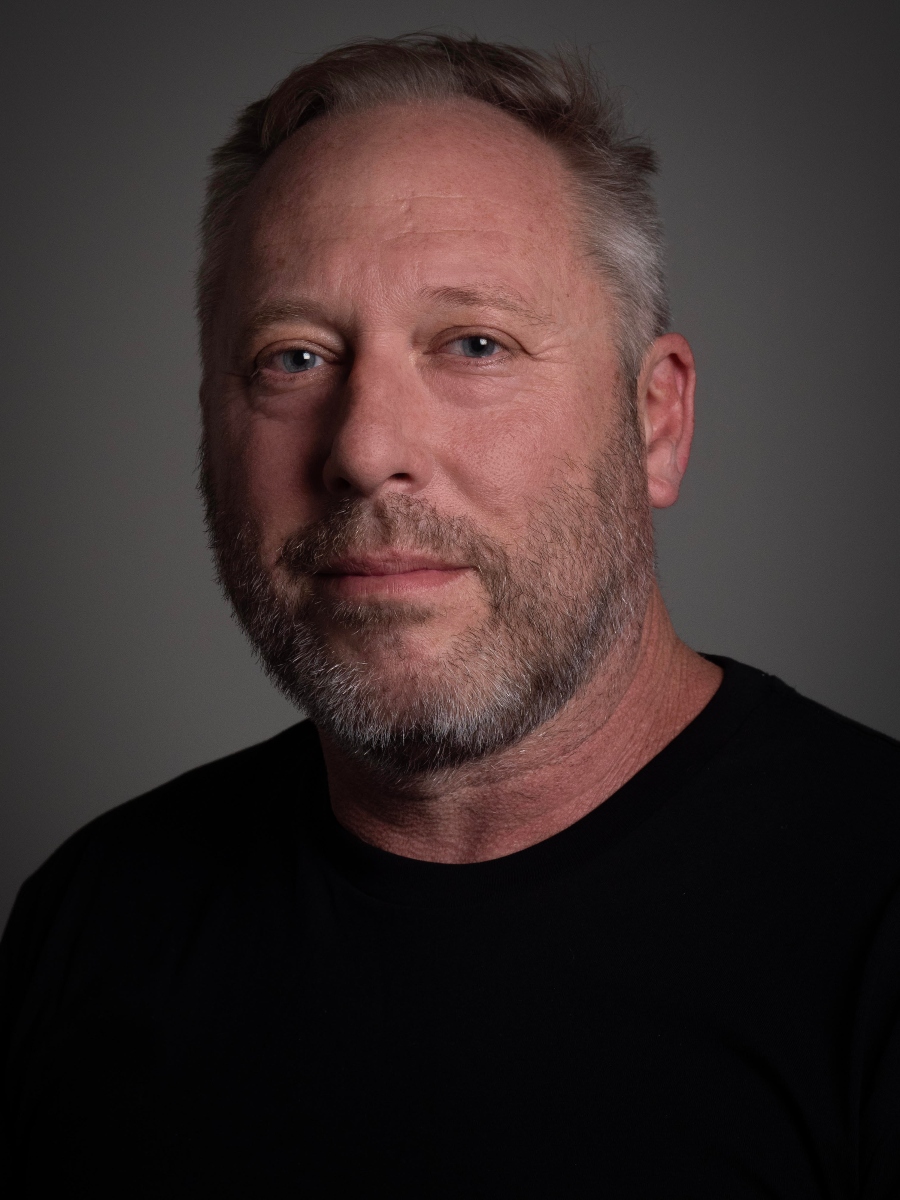
Below the Line: You worked on Ash vs. Evil Dead a few years ago, but Evil Dead Rise is a completely different beast. What were the differences for you?
Nick Bassett: I did 30 episodes of Ash. I knew it quite well. I got to meet Sam [Raimi] and Bruce [Campbell], of course, and Rob Tapert. All those guys. In fact, Rob, I’ve known since the Xena and Hercules days and different things with him. Meeting Sam was exciting. Here’s this great big Hollywood director who was this guy I didn’t really expect. He was so earnest, cool, and generous. He basically goes, ‘You guys know what you’re doing, just keep doing it.’ Coming onto this, I was a bit nervous because Ash vs. Evil Dead was quite fun, lighthearted, and had quite a lot of humor in it, in a really fun, pop kind of way. I don’t know what you’d describe it as. It was a punk-rock-ish, crazy thing.
I met Lee [Cronin] and he had quite a serious script, I guess. Although it still had humor in it, he was like, ‘I want to make a great horror movie.’ Of course, you go, “Okay, how do we do something new, but also not lose sight of what we started?” We landed in a good place, and there was a lot of trust because I knew Lee before this. We were talking via Zoom. He had a notebook and he was writing. I would say things and he’d write them down. I was like, “What is he writing down? I wonder what he’s writing.” At that point, the story felt very high-rise. Scale-wise, I wasn’t quite sure where he was heading with it in terms of what this building was like or anything. He was just feeling out, “Where’s it going to land?” Rob was probably the one who got me the job, saying, ‘You’ve got to use Nick. You should. It would be wise to use him.’
BTL: So did your Ash vs. Evil Dead experience help or hinder you when it came to landing the Evil Dead Rise gig?
Bassett: For someone like Lee — of course, he doesn’t know anyone here — he would be like, ‘I probably feel like I need to meet five other people as well, and see who’s best.’ When we talked, it was obvious that I wasn’t going to go down the same path, necessarily. He liked Ash vs. Evil Dead, but of course, he was like, ‘We’re not making that,’ nor would that have interested me, either. It was a good relationship, and it helped. It did exactly what you’re saying. It helped on one hand and hindered on the other. There would have been another director who might have gone, “I want something new. Let’s just start again.”
Lee is such a fan of the franchise and knew that if he brought this team on… because a lot of us worked on both, like the art department. I’ve worked with some of them for 20-plus years. We went from Ash to Sweet Tooth to this. We have a really good working relationship. We’ve rebuilt that cabin in the woods three or four times. We’d met Sam and knew what they liked, so it was a cool shorthand in one sense, and also, “Let’s just start fresh.”
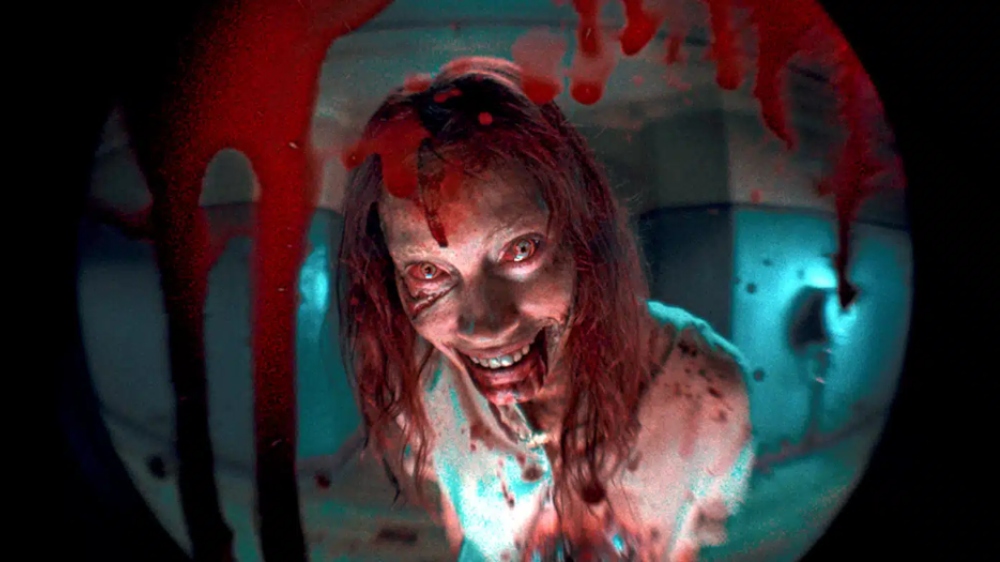
BTL: The characters, and thus the audience, spend a good deal of time in the apartment. We see how it affects the events and how the events affect the apartment. How much time and effort did you put into getting it right — and what did you need out of that apartment?
Bassett: That’s a good question. I’ll go through the process of it because that was quite important. Lee had a script. It was just a normal development. He might have had imagery in his mind and he certainly had staging ideas when he wrote it. When he arrived in New Zealand, we were still talking for two weeks on Zoom, by the way, because he had to do a quarantine and spend two weeks frustratingly in a hotel room 10 minutes from the production base. We had to decide what the layout of the set was going to be over Zoom calls, and that was okay because it was so focused.
We were just like, “Let’s focus on this.” But we didn’t. I started [by] reading the script. I had something in mind for myself. It did say “art deco building” in the script. On one hand, I was like, “Is that a good idea or a bad idea?” But we were like, “Let’s see it as a good idea, and at least it’s got a history straightaway.” We embraced that. We didn’t have an exterior of the building locked in, but we knew we were scouting for one. We had guys out looking. Auckland’s not an art deco place. There’s one or two. It’s unique, so we were like, “We may not find this.” We worked on the layout of the set in detail with Lee, and he was determined that it would be claustrophobic. That was the first part of the brief. He was happy about that. That wasn’t a concern for him. He didn’t go, “We are going to the city now. This is a big, epic, city show.” That came through pretty quickly. It’s like, “This is all about being stuck in this bloody apartment. We’re in here and we’re not going to go out until this thing’s over.”
Getting it right was all about… firstly, I was working on the style and the sideline, but we were really working on that footprint of, how long the corridor has to be, how wide it has to be, what the points of view are, what the relationship was, so they can be in this room and not hear or see what’s happening in this space. Working with the DoP, Dave Garbett, who was a great voice — he’s such a laid-back guy — but he was like, “It’d be cool to have a bit more decks for this moment so the corridor gets a little longer.” It was very focused.
Going from Sweet Tooth, which was everywhere — we were in 60 locations and building sets like crazy — to, it’s all about this apartment, it was a real shift for me in terms of getting it right. Colors and everything. Lee’s quite an obsessive character. He was concerned about getting it right. There was not much, “It’ll be fine.” He left a lot to us and he trusted us a lot. Every color, I’d go, “We’re thinking this” and he’d go, “I like it.” We’d paint it up there when we were camera testing. It was very fastidiously done, even though it looked like there was this chaos to the movie. Every decision was labored over.
BTL: I read an interview with Lee in which he described the 1700 gallons of blood as a character unto itself. Did he, and did you, view the apartment as a character unto itself? Is it a lifeform in its own way?
Bassett: Definitely. It was a character. When you think of the cabin in the woods image, the untrained eye goes, “It’s just a little hunting cabin in the woods,” but there are a lot of interesting things. There’s a face to that cabin. It lights up, and it’s got eyes, essentially. It’s small and compact. It’s got a weird design. I’ve tried to interpret it many times and I’ve ended up sharing the floor plan with fans because they’re like, “I can’t work out what’s going on in that bathroom.” It’s a complete mystery. When we built that part of it, we were like, ‘How do we do something that’s memorable?’ It had to be a character, and it also had to be a collection of all these characters living as a family. I wanted it to feel like a chaotic family home.
When we had young kids, our house felt not dissimilar. It was a bit small and there was laundry everywhere. The big dinner table is an art studio as well. That felt important and each room was now going to have a big part in a very short time. It’s going to say a lot about this family, so it had a big job to do. I thought it had to feel welcoming enough that you go, “This is a cool pad in L.A. We can live here. All our stuff’s here. It’s going to get knocked down. That’s devastating because now we’ve got to move. We’ve got to find something.” You’ll probably never find somewhere as big as that. It still had to have appeal even though it was a crummy old building. I still wanted it to feel like, once you came out of that big corridor space, it’s a sanctuary as well. Then quickly it turns into a battleground, I guess.
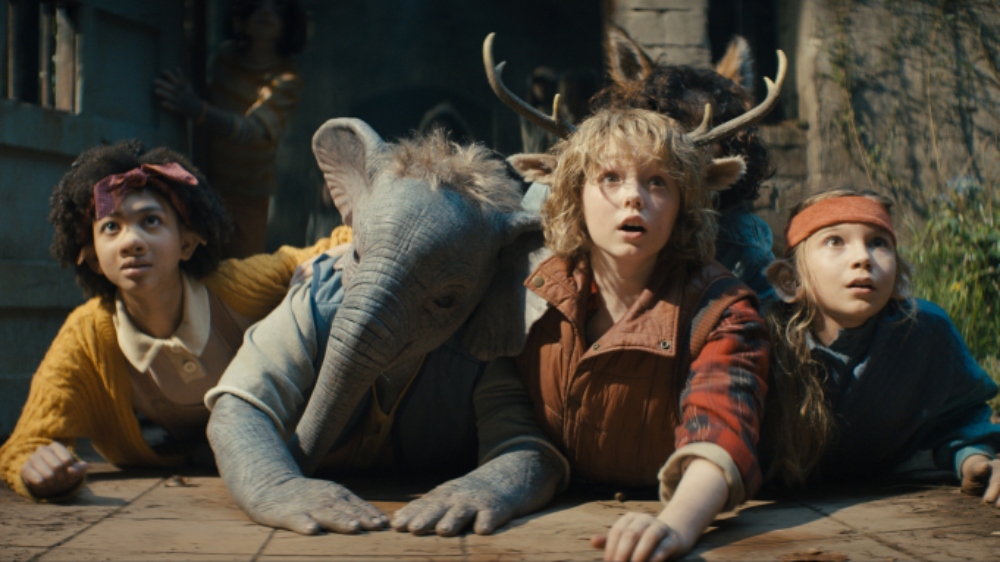
BTL: Let’s jump to Sweet Tooth. You didn’t work on the pilot. What were the challenges in coming in on that, on having so many sets to build, so many locations to go to, and an existing comic-book universe to create?
Bassett: They couldn’t have been more different, and it was a perfect bookend. Sweet Tooth, I didn’t do the pilot. I came on a year later to do the rest of it. The original designer had kind of started this thing up. When you take over from someone it’s quite intimidating, because you’re like, “How the heck did they arrive at what that is?” What you realize is, it’s a lot of communication with Jim Mickle and the showrunner, and a lot of analyzing of what the heck we’re trying to achieve.
One of the main things is, Jim described it as a storybook, optimistic, apocalyptic world. The comic is as dark as it gets, but this was like, “How do we do something different?” COVID really hit when we were in early prep, so most of our calls were Zoom-orientated. We were working in New Zealand while Jim and those guys were in the States. I was offering locations. We were working together on how the heck to do this. There were so many locations. It would go from an abandoned shopping mall to walking down a street. That’s challenging on any show, let alone the fact that it’s only one page of dialogue. That is what was cool, talking with Jim and negotiating about how we can use New Zealand well. We were pitching locations back.
BTL: Like the zoo…
Bassett: We came up with things like the theme park and the zoo. There wasn’t originally a zoo in that script. That setting was meant to take place, ironically, in a high-rise or an office building. I was like, “I can’t think of anything worse than being in a high-rise building doing that stuff.” I said, ‘Could we do it somewhere else? Like, in a zoo?’ That was one of their ideas, anyway, and I went, ‘We could do that well.’ Ironically, as I said, the next thing that comes along is a high-rise.
BTL: What was exciting for Season 2?
Bassett: Season 1, we were going at a mad pace and we were moving around a lot. Season 2 was very much more, “We’re going to stay in this place for a little bit longer.” This Essex County that we’ve created is now the home for the show. That was challenging. Straight away, we set ourselves in a zoo and you can’t shoot in a zoo in New Zealand. It turns out it was a tough idea. With Essex, the first thing is to expand that and find new locations for it. Our job is this hard draft of building a world, but the show has got so much heart and soul in it, and all those character moments. We just build as much as we can and create as much as we can, so these heartfelt moments can happen. I’m quite blown away by how emotional that show is.
On the surface, it’s almost like a kid’s show. If you look at one image and another one, it’s one of the darkest stories you can imagine. When you watch it, you get to see all of that and it’s not until you see the show that you understand how complex it is. It’s fun and I had fun contributing to it. With the collaboration, there was never a mandate that, “This has to happen.” With Jim, it was always, ‘We’ve written this. What do you think? Can we do that? Is that a good idea? Have you got other ideas?’ We’ll be working on them early on. There’s a little more code of silence on that one, even though there’s a lot I could talk about. Wish I could say more, but it’s exciting.
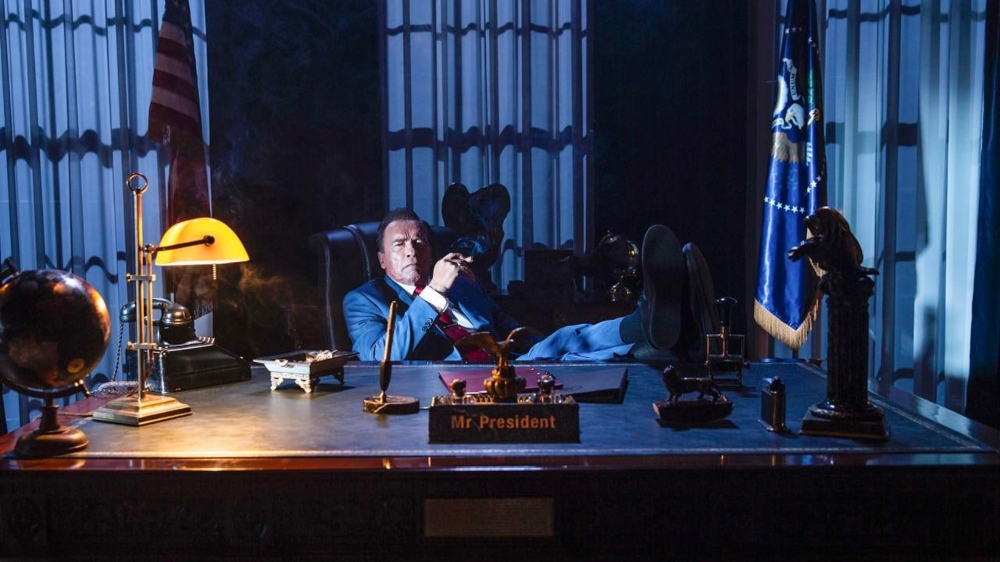
BTL: You and much of your usual team also worked on the upcoming film, Kung Fury 2…
Bassett: Yeah, I have been busy. It’s been three years nonstop of literally one to the other, which is good, actually. The crew in New Zealand is very small. The industry here… there are people who do those big epic films and get lost in those. I’ve done a couple of those things, but when you do these more mid-sized shows, you get a committed and excited crew. We’ve stuck together for years, and I’m lucky. That’s the strength… the whole crew, we know each other. We have a great shorthand [for] how we work together, and we know the city well. We know the resources well, and it’s a cool thing.
BTL: Let’s dip into Kung Fury 2. How was that as a shoot? And what’s happening with it?
Bassett: Kung Fury 2 is a political nightmare at the moment, to be honest. There are a whole lot of things going down with the legal side of it. I actually just talked to the Producer of that before this, just a quick message. It was the most exciting project. I read that script and I was like, “There is no way you can make this film. I’m keen to do it and see if we can do it, but it’s the craziest.” I can’t wait for people to see something of it. I hope they at least release a little teaser for it because it’s one of the most fun projects, but it’s extremely challenging and it shows how hard indie filmmaking is.
It’s a true indie film. It’s reliant on investors and it’s sitting in a tricky place right now. I talk to David [Sandberg], the Director, every few weeks. He’s got other projects and he’s like, ‘I think it’s going to happen.’ We go on this rollercoaster of, “It’s going to come out,” but fingers crossed it does. I can’t wait for people to see it. It’s absolutely insane. Evil Dead’s crazy, but this is 100 times more insane.
BTL: We’ve talked about the present. Let’s dip into the past. How did you get into the business?
Bassett: I did a bit of everything. My beginning was, “Leave school, consider art school, I’ll probably get lost at art school, and come out there at the end of it.” I went to design school. I did furniture and 3D design. Computers were even a little fresh there. Then prop-making a little bit. I worked for a jeweler and a designer. We made furniture and jewelry. I learned how to make a few things, so I got interested in that. I worked all the way through from running for a few weeks, set dressing, and [I] just did everything. Tons of time on set. A lot of my background was being an on-set Art Director with the director, and you just learned so much. You’re there with the shooting crew, watching why a set works well or doesn’t work well. It’s been 30 years of that. I’m just getting back into art directing.
The first proper production design job I got where I was like, “This is me,” was Ash vs. Evil Dead. I’d been Supervising Art Directing on a movie that I didn’t love and then Ash vs. Evil Dead came around. I thought, “This is probably what I wanted. This is it.” Once you get one chance like that, you’ve got to go for it. I said, ‘We’re going to make this as great as we can.’ That was it.
New Zealand is very much like that. You start, and historically you work your way through an art department. It’s changing a little bit now where there are bigger projects. You can come in as a Set Designer or an Art Director and probably work at that level, but what you miss is all of that on the ground. You miss the part where you are watching the filming, and that’s where you learn so much. I have no regrets about those years.
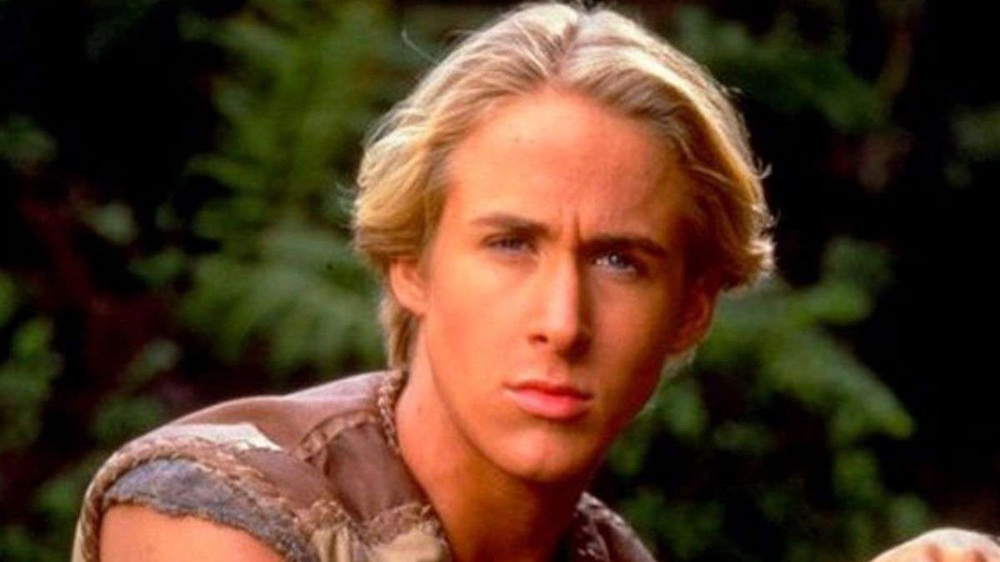
BTL: You mentioned having worked on Hercules and Xena back in the day. What did you learn on those shows?
Bassett: Bits and pieces, like prop-making. I did a show with Ryan Gosling called Young Hercules, which is actually quite terrible, but a lot of fun. The film industry is this, anyway; it’s boom [or] bust. Those shows came at a time [when] they set up some stability here, and Rob Tapert was a big part of that; keeping work consistent, and people bought houses based on that. Before then [in] the industry, [it] was a little bit harder to do that. TV commercials were where you made money back then. TV and film, not so much.
[So] yeah, he’s a big part of it and it’s cool to still be working with Rob. He’s a big part of keeping it going. It’s so cool. It’s a huge legacy here. We often joked about it because it was quite a low-quality show on one hand, but on another, it was huge for Auckland. It employed so many people, and they created a look that was sustainable for the show. It’s there. It’s been a great success, and we’re lucky we just get to do this.
BTL: What have you not done yet that you’d like to try?
Bassett: As a Production Designer, I feel like I’ve got a million things I want to do. I would actually like someone to hand me a serious script and go, “We are making a psychological drama about something.” Something on that level and go, “Let’s just really get into the story.” I enjoy the big, world-building, fun stuff, I guess, but there’s part of me that would enjoy the challenge of that. That would probably be something I would like to do. [Maybe] a thriller or something very much character-based. I’d be ready for that. I love all the character stuff, even in Evil Dead Rise. There are just so many. We go nuts with the layers of detail. I could write a book on the backstories that we’ve created that weren’t even in the script.
There are so many things in that film that are homages to the original films that we’ve added. “There should be a Home Sweet Home thing on the wall somewhere. Where’s it going to be?” We’re remaking the clock from the original cabin. Smaller stuff works on our set. It’s Three Stooges posters and all this stuff that is [really] detailed. You can apply that detail to anything as long as you are obsessed with it. A serious movie would be cool, but I suspect that’s maybe not the next thing that’s going to happen.
Evil Dead Rise is now playing in theaters nationwide courtesy of Warner Bros. and New Line, while Season 2 of Sweet Tooth is now streaming on Netflix.





